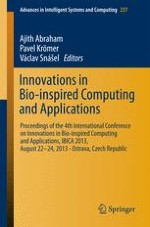This volume of Advances in Intelligent Systems and Computing contains accepted papers presented at IBICA2013, the 4th International Conference on Innovations in Bio-inspired Computing and Applications. The aim of IBICA 2013 was to provide a platform for world research leaders and practitioners, to discuss the full spectrum of current theoretical developments, emerging technologies, and innovative applications of Bio-inspired Computing. Bio-inspired Computing is currently one of the most exciting research areas, and it is continuously demonstrating exceptional strength in solving complex real life problems. The main driving force of the conference is to further explore the intriguing potential of Bio-inspired Computing. IBICA 2013 was held in Ostrava, Czech Republic and hosted by the VSB - Technical University of Ostrava.
